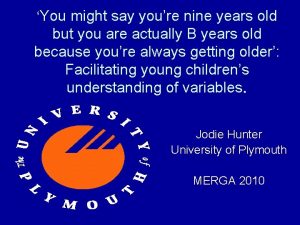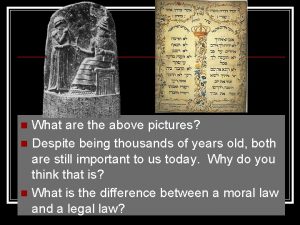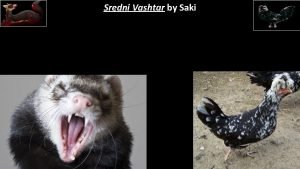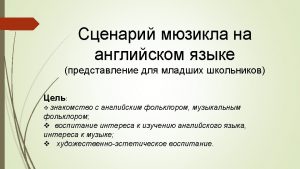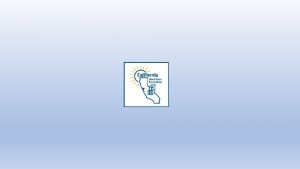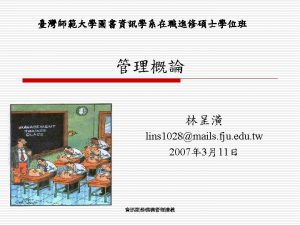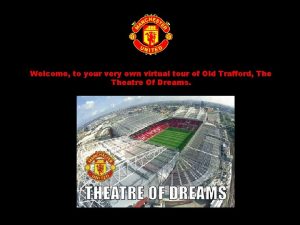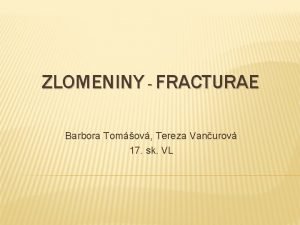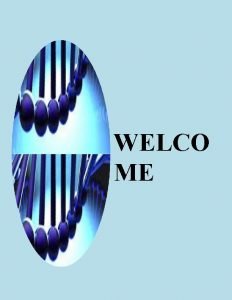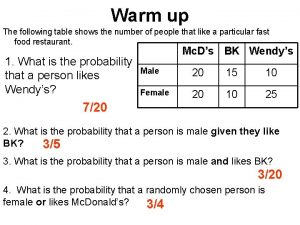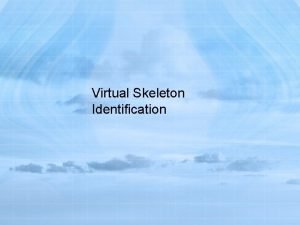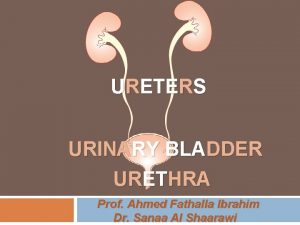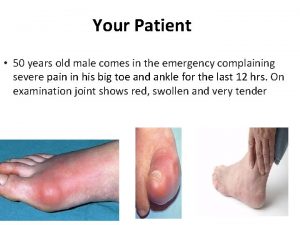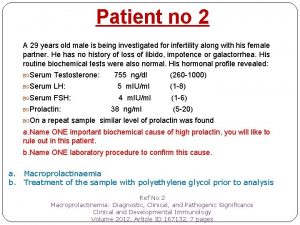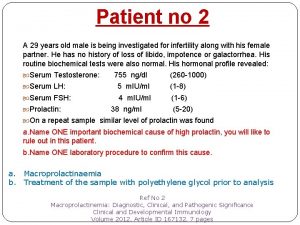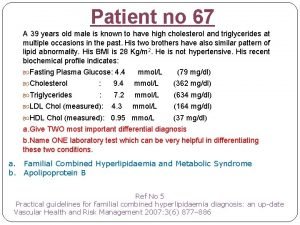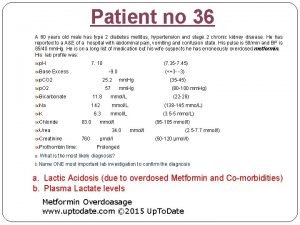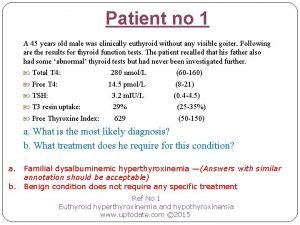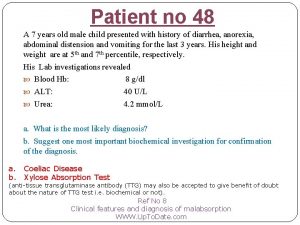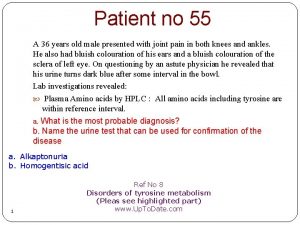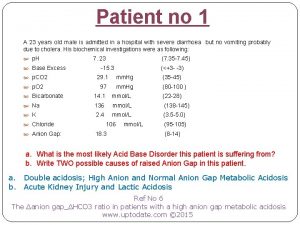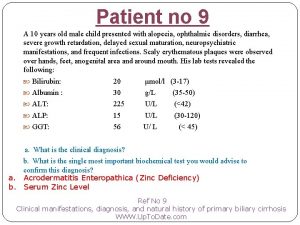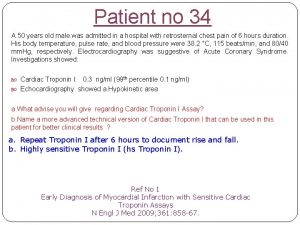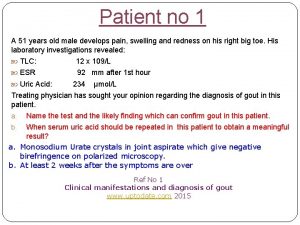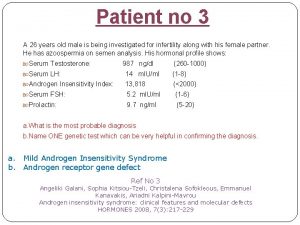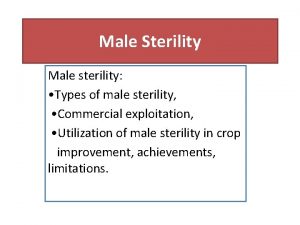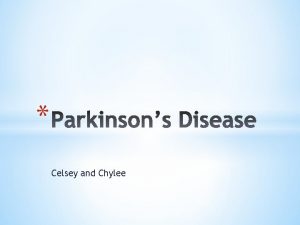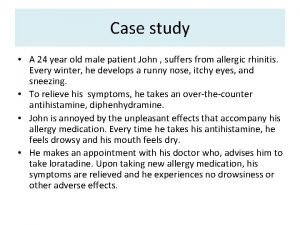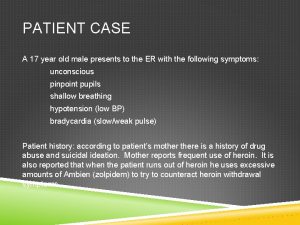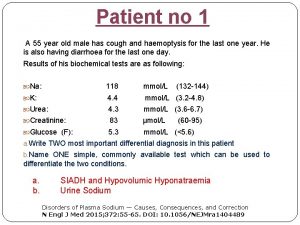Your Patient 50 years old male comes in












































- Slides: 44

Your Patient • 50 years old male comes in the emergency complaining severe pain in his big toe and ankle for the last 12 hrs. On examination joint shows red, swollen and very tender

Lecture objectives At the end of the lecture students will be able to: • Define gout, its types and complications • Name the defective enzymes involved in purine nucleotide metabolism • Explain the causes of hyperuricemia

Uric Acid Uric acid is formed from the breakdown of nucleic acids and is an end product of purine metabolism. Uric acid is transported by the plasma from the liver to the kidney, where it is filtered and where about 70% is excreted in Urine. The remainder of uric acid is excreted into the GI tract.


Catabolism of Purine Nucleotides

Uric acid • Normal serum uric acid concentration: 3 -7 mg/dl in males; 2 -5 mg/dl in females • Excretion 250 -750 mg per day • Hyperuricemia: increased serum uric acid levels above 7 mg/dl in men and above 6 mg/dl in women

Gout • Gout is a metabolic disorder of purine catabolism resulting in hyperuricemia and crystallization of uric acid salts in joints, soft tissues, cartilages and kidneys. • The joints become inflamed, painful, and arthritic. The joint most commonly involved in gout is the first metatarsophalangeal joint (the big toe) • Renal stones • Tophus.

Types of Gout • Primary gout is inherited-90%, due to inborn error of metabolism and mainly affects men over 30 2 1 • Secondary gout is associated with various diseases causing increased synthesis or decreased excretion of uric acid leukemia, polycythemia, HGPRT deficiency, renal insufficiency, radiotherapy, lifestyle (rich foods) 3 1

There are two pathways leading to nucleotides • De novo synthesis: The synthesis of nucleotides begins with their metabolic precursors: amino acids, ribose-5 -phosphate, CO 2, and one-carbon units. • Salvage pathways: The synthesis of nucleotide by recycle the free bases or nucleosides released from nucleic acid breakdown.

What happens in gout? Inhibited by AMP Ribose 5 -phosphate PRPP Phosphoribosyl IMP amine GMP Inhibited by IMP, AMP, and GMP Inhibited by GMP 1. Negative regulation of PRPP Synthatase & PRPP Amidotransferase is lost 2. PRPP levels are increased because of defects in salvage pathways Therefore, there is net increase in biosynthetic/degradation pathways!!


Risk Factors • High Purine Diet (Red Meat, Fatty Poultry, High Fat Dairy, Seafood) • Alcohol Consumption • Trauma • Osteoarthritis • Surgery • Starvation • Dehydration • Obesity • Drugs • Renal Impairment • Genetic Mutations

Gout • Tophus or tophi in plural is a deposit in the elbow, toe, ankle, knee, ear, fingers or other joint in the body of monosodium urate crystals. • Inflammation of joints • Acute gouty arthritis is a painful condition that often affects only one joint • Chronic gouty arthritis is a repeated episodes of pain and inflammation

Acute gout • Other common areas of affliction.

Gout - acute arthritis acute synovitis, ankle & first MTP joints

Gout - acute bursitis acute olecranon bursitis

Monosodium urate crystals needle shape negative birefringence polarized light red compensator

Crystal-induced inflammation hyperuricemia inflammation crystal deposition crystals engulfed protein binding influx of PMN’s receptor binding cytokine release

Gouty arthritis - characteristics • • • sudden onset middle aged males severe pain distal joints intense inflammation • • recurrent episodes influenced by diet bony erosions on Xray hyperuricemia

Hyperuricemia Serum uric acid level dependent upon • Rate of uric acid production • Efficiency of renal uric acid excretion

Hyperuricemia n o i t c odu n o i t xcre e pr Hyperuricemia results when production exceeds excretion

Hyperuricemia prod uctio n excr etion net uric acid loss results when excretion exceeds production

Chronic tophaceous gout tophus = localized deposit of monosodium urate crystals

Gout - tophus classic location of tophi on helix of ear

Gout - X-ray changes DIP joint destruction phalangeal bone cysts

Gout - X-ray changes bony erosions

Gout - cardinal manifestations arthritis tophi acute HYPERURICE & MIA chroni c nephrolithiasis nephropathy

Gout: kidney stones The kidneys are also affected, because excess uric acid is deposited in the kidney tubules. • Other complications like urolithiasis and renal damage

Uric acid metabolism dietary intake xanthine oxidase catalyzes hypoxanthine to xanthine & xanthine to uric acid purine bases hypoxanthine uric acid cell breakdown

Hyperuricemia - mechanisms excessive production inadequate excretion hyperuricemia

Drugs used to treat gout Acute Arthritis Drugs colchicin e steroids NSAID’s Urate Lowering Drugs allopurin ol probeneci d febuxostat? rest + analgesia + time

Drugs used to treat gout Acute Arthritis Drugs colchicin e steroids NSAID’s Urate Lowering Drugs allopurin ol probeneci d febuxostat? rest + analgesia + time

Uric acid metabolism dietary intake purine bases hypoxanthine allopurinol inhibits xanthine oxidase xanthine uric acid cell breakdown oxypurinol allopurin ol ol

Lesch-Nyhan Syndrom • Inherited X linked recessive disorder caused by a deficiency of hypoxanthine guanine phosphoribosyl transferase (HGPRT). • Characterized by excess production of uric acid leads to Gout • Loss of HGPRT leads to elevated PRPP levels and stimulation of de novo purine synthesis. • Decrease salvage pathway - decrease IMP & GMP – impairs feedback regulation of de novo purine synthesis – leads to overproduction purines


Lesch-Nyhan syndrome • Symptoms: • Nephrolitiasis- leads to renal failure • Mental retardation, aggressive behaviour • Self-mutilation – bite their fingers and lips

PRACTICE QUESTIONS

Q. 1 A 24 year old man woke up at night with severe pain and swelling in his right big toe. There is no history of trauma. His joint aspirate shows negatively birefringent crystals and no organisms detected on culture. Rheumatic Factor is negative in blood test. What is the most likely diagnosis? a) Septic arthritis b) Rheumatoid arthritis c) Gout d) Osteoarthrosis Key: C a. Wrong because Organism in culture is negative b. Wrong because RF is negative c. Right because of negatively birefringent crystals and typical symptoms. d. Wrong because Osteoarthrosis occurs in old age and also affects on big joints

Q. 2 A 63 -year-old male presents with severe pain in his left wrist and a nodular swelling is observed on the wrist which is red and tender to touch. Aspiration reveals fine needle shaped yellow birefringent crystals. Allopurinol is most likely to help this patient because: a) b) c) d) It suppresses Xanthine oxidase It increases the excretion of uric acid It suppresses Adenosine deaminase It Increases the degradation of Purines Key: A a. Right because it suppresses Xanthine oxidase which reduces the generation of uric acid. b. Wrong because allopurinol has no effect on the excretion of uric acid c. Wrong because it does not suppress Adenosine deaminase d. Wrong because it does not Increases the degradation of Purines

Q. 3. Which is the correct statement regarding gout? a) Only about 5% of hyperuricemic patients develop gout b) Monosodium urate crystals are demonstrable in synovial fluid leukocytes c) May occur as a result of PRPP synthetase deficiency d) The great toe is the site of first attack in 90% of cases

• Key: D a) Primary gout is a biochemically and genetically heterogeneous disorder resulting from inborn metabolic errors that alter uric acid homeostasis. b) About 5 - 10% of people with hyperuricemia develop gout at some point in their lifetimes. c) One of the inherited defects that lead to early development of severe hyperuricemia and gout is elevated 5'-phosphoribosyl-1'pyrophosphate synthetase (PRPP synthetase) activity. d) Gout is defined by: an increase in the serum urate concentration; characteristic, recurrent, acute arthritic attacks, with monosodium urate monohydrate crystals demonstrable in synovial fluid leukocytes; renal disease, often accompanied by hypertension with glomerular, tubular, interstitial, and vascular involvement; and uric acid nephrolithiasis.

Q. 4 Treatment of an acute gout attack is achieved by? a) Colchicine b) Allopurinol c) Uricosuric agents d) Methorexate Key: A NSAIDs are the most commonly used drugs in acute gout. Over the long term, gout is treated by decreasing tissue stores of uric acid with the xanthine oxidase inhibitors allopurinol or febuxostat or with the uricosuric agent probenecid.

Q. 5 Which of the following statement is correct in Pseudogout? a) It occurs as a result of calcium pyrophosphate deposition b) It usually affects younger individuals c) It cannot be associated with hyperthyroidism, ochronosis and Wilson’s disease d) It occurs due to uric acid deposition

Key: A a) Pseudogout, also known as calcium pyrophosphate deposition (CPPD) disease, is a type of arthritis that causes spontaneous, painful swelling in your joints. – an analysis of joint fluid to look for calcium pyrophosphate crystals b) Pseudogout is more common in older adults c) Pseudogout can sometimes be associated with other illnesses, such as: – hemophilia (a hereditary bleeding disorder that prevents the blood from clotting normally) – ochronosis (a condition causing the deposit of a dark pigment in the cartilage and other connective tissues) – amyloidosis (an abnormal buildup of protein in the tissues) – hemochromatosis (an abnormally high level of iron in the blood) d) Uric acid is not deposit in Pseudogout • X-rays of the joints to check for any damage to the joint, calcification (calcium buildup) of the cartilage, and deposits of calcium in the joint cavities
 First comes love then comes marriage
First comes love then comes marriage Goat years to human years
Goat years to human years 300 solar years to lunar years
300 solar years to lunar years Four score and seven years meaning
Four score and seven years meaning Patient 2 patient
Patient 2 patient Chapter 24 trauma overview
Chapter 24 trauma overview Geert vinck
Geert vinck Lydia is 48 years old single outspoken and very bright
Lydia is 48 years old single outspoken and very bright Njbta
Njbta Im 15 years old
Im 15 years old Genesis 17 :1
Genesis 17 :1 Kids songs
Kids songs Are you nine years old
Are you nine years old Britt xxx
Britt xxx Despite being thousands of years old
Despite being thousands of years old Under 15 years old
Under 15 years old R. a. 9344
R. a. 9344 The hen by saki summary
The hen by saki summary What's your name is
What's your name is In the old days there lived
In the old days there lived Once upon a time there lived an old man and an old woman
Once upon a time there lived an old man and an old woman Once upon a time there lived an old woman this old woman
Once upon a time there lived an old woman this old woman Give us your hungry your tired your poor
Give us your hungry your tired your poor What comes to your
What comes to your What comes to your mind when you see this logo?
What comes to your mind when you see this logo? What comes to your mind
What comes to your mind What comes to your mind if you heard the word institution
What comes to your mind if you heard the word institution What comes to mind when you hear the word 'family'?
What comes to mind when you hear the word 'family'? What comes to your mind when you think about god
What comes to your mind when you think about god What comes to your mind
What comes to your mind What comes into your mind
What comes into your mind Habakkuk prayer for revival
Habakkuk prayer for revival What's your name? how old are you?
What's your name? how old are you? Celebrations unit 8
Celebrations unit 8 Virtual tour old trafford
Virtual tour old trafford Fractura male sanata
Fractura male sanata Whats a male sheep called
Whats a male sheep called Xyy
Xyy Male fat distribution
Male fat distribution An aquarium contains 6 male goldfish
An aquarium contains 6 male goldfish Flat brow bone
Flat brow bone Length of male urethra
Length of male urethra Male reproductive system from front
Male reproductive system from front Navy male hair regulations
Navy male hair regulations Electrical gadgets tools
Electrical gadgets tools












